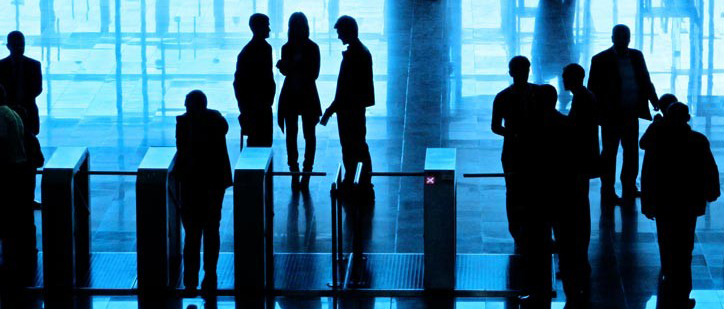From Cybersecurity to Physical Actions: Reinforcing Corporate Security in a Changing Globe
In today's swiftly progressing electronic landscape, the significance of company protection can not be overemphasized. As cyber hazards end up being common and significantly sophisticated, companies have to surpass conventional cybersecurity procedures to guard their properties and procedures - corporate security. This is where the integration of physical protection measures becomes essential. By combining the staminas of both cybersecurity and physical safety and security, business can develop an extensive protection technique that deals with the diverse variety of threats they deal with. In this discussion, we will discover the altering threat landscape, the need to incorporate cybersecurity and physical protection, the execution of multi-factor verification measures, the importance of employee recognition and training, and the adjustment of protection steps for remote labor forces. By analyzing these essential locations, we will certainly obtain useful understandings right into just how companies can reinforce their corporate safety and security in an ever-changing globe.
Recognizing the Altering Risk Landscape
The developing nature of the modern-day world demands a comprehensive understanding of the altering danger landscape for reliable business security. In today's electronic and interconnected age, risks to company protection have actually come to be much more complex and sophisticated. As modern technology advancements and organizations come to be increasingly dependent on electronic facilities, the potential for cyberattacks, data breaches, and other security breaches has actually dramatically boosted. It is essential for organizations to stay informed and adapt their security measures to resolve these progressing hazards.
One key element of recognizing the transforming danger landscape is identifying the different kinds of risks that organizations deal with. Cybercriminals are constantly developing new methods to make use of vulnerabilities in computer system systems and networks. These threats can range from malware and ransomware attacks to phishing frauds and social design strategies. Additionally, physical threats such as burglary, vandalism, and corporate espionage remain widespread problems for businesses.
Surveillance and analyzing the threat landscape is vital in order to identify potential threats and vulnerabilities. This entails staying upgraded on the current cybersecurity trends, examining danger intelligence reports, and carrying out regular threat evaluations. By recognizing the transforming threat landscape, organizations can proactively apply ideal protection procedures to alleviate dangers and shield their possessions, online reputation, and stakeholders.
Integrating Cybersecurity and Physical Security
Incorporating cybersecurity and physical security is important for thorough corporate protection in today's digital and interconnected landscape. As companies progressively count on modern technology and interconnected systems, the limits between physical and cyber threats are coming to be obscured. To effectively protect against these threats, a holistic strategy that integrates both cybersecurity and physical safety procedures is necessary.
Cybersecurity focuses on shielding digital properties, such as data, systems, and networks, from unauthorized accessibility, disturbance, and theft. Physical security, on the various other hand, includes measures to safeguard physical assets, individuals, and centers from risks and susceptabilities. By incorporating these two domains, organizations can resolve susceptabilities and risks from both electronic and physical angles, therefore boosting their general security stance.
The combination of these two techniques permits a much more extensive understanding of security risks and allows a unified reaction to incidents. Physical access controls can be enhanced by integrating them with cybersecurity procedures, such as two-factor authentication or biometric identification. Similarly, cybersecurity measures can be complemented by physical protection measures, such as security electronic cameras, alarm systems, and secure gain access to factors.

Executing Multi-Factor Verification Measures
As companies significantly focus on comprehensive security steps, one effective strategy is the execution of multi-factor verification steps. Multi-factor authentication (MFA) is a safety technique that requires individuals to offer multiple forms of recognition to access a system or application. This method adds an additional layer of security by integrating something the customer understands, such as a password, with something they have, like a safety or a fingerprint token.
By executing MFA, organizations can dramatically boost their security stance - corporate security. Conventional password-based authentication has its limitations, as passwords can be quickly jeopardized or neglected. MFA mitigates these dangers by adding an additional verification element, making it harder for unauthorized individuals to obtain access to delicate information
There are numerous kinds of multi-factor verification techniques available, consisting of biometric verification, SMS-based verification codes, and hardware symbols. Organizations require to assess their specific requirements and choose one of the most appropriate MFA service for their requirements.
However, the implementation of MFA need to be carefully intended and implemented. It is important to strike a balance between safety and security and usability to stop customer disappointment and resistance. Organizations ought to additionally think about possible compatibility issues and supply adequate training and assistance to make sure a smooth change.
Enhancing Staff Member Understanding and Training
To reinforce corporate protection, organizations should prioritize boosting employee recognition and training. Numerous protection violations take place due to human error or absence of awareness.
Effective employee awareness and training programs need to cover a large range of topics, consisting of data protection, phishing assaults, click this social engineering, password hygiene, and physical protection procedures. These programs ought to be customized to the particular needs and responsibilities of different staff member duties within the organization. Regular training simulations, workshops, and sessions can aid staff members create the essential abilities and knowledge to react and recognize to protection risks successfully.
Moreover, companies ought to motivate a culture of safety and security understanding and provide recurring updates and suggestions to maintain workers educated concerning the current threats and mitigation methods. This can be done through internal interaction networks, such as newsletters, intranet websites, and email campaigns. find out this here By promoting a security-conscious labor force, companies can significantly reduce the chance of security incidents and protect their beneficial assets from unauthorized access or compromise.

Adapting Protection Measures for Remote Labor Force
Adjusting corporate protection steps to fit a remote workforce is vital in making certain the protection of sensitive details and assets (corporate security). With the increasing fad of remote job, companies have to carry out appropriate safety steps to minimize the threats related to this new way of working
One essential facet of adjusting safety and security measures for remote work is establishing safe and secure communication channels. Encrypted messaging platforms and digital exclusive networks (VPNs) can help secure delicate info and stop unapproved accessibility. Furthermore, companies need to impose making use of solid passwords and multi-factor authentication to improve the security of remote gain access to.
One more crucial consideration is the application of protected remote gain access to options. This includes offering workers with protected access to business sources and data through digital desktop computer facilities (VDI), remote desktop computer protocols (RDP), or cloud-based remedies. These technologies ensure that sensitive info continues to be protected while allowing staff members to perform their functions effectively.

Last but not least, thorough security recognition training is crucial for remote employees. Training sessions look at here now must cover best practices for safely accessing and dealing with sensitive info, recognizing and reporting phishing attempts, and preserving the general cybersecurity hygiene.
Verdict
In conclusion, as the threat landscape proceeds to progress, it is important for companies to reinforce their protection measures both in the cyber and physical domain names. Integrating cybersecurity and physical protection, carrying out multi-factor verification measures, and enhancing worker awareness and training are necessary actions in the direction of accomplishing robust company safety and security.
In this conversation, we will certainly explore the altering hazard landscape, the demand to integrate cybersecurity and physical safety and security, the application of multi-factor verification procedures, the relevance of worker recognition and training, and the adaptation of safety actions for remote labor forces. Cybersecurity measures can be complemented by physical safety actions, such as surveillance cameras, alarms, and secure accessibility points.
As companies significantly focus on thorough security steps, one reliable method is the implementation of multi-factor authentication procedures.In conclusion, as the risk landscape continues to develop, it is crucial for organizations to strengthen their safety and security gauges both in the cyber and physical domain names. Integrating cybersecurity and physical safety, implementing multi-factor verification actions, and improving employee awareness and training are vital steps in the direction of accomplishing robust business protection.